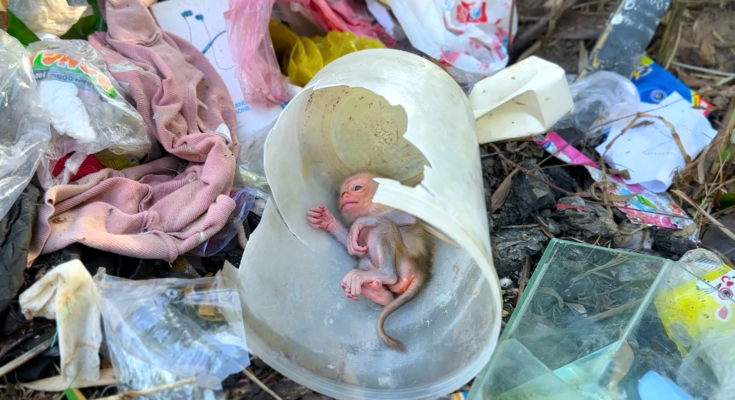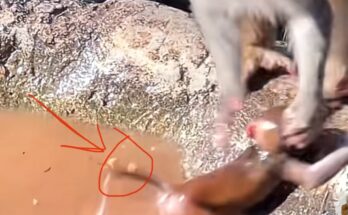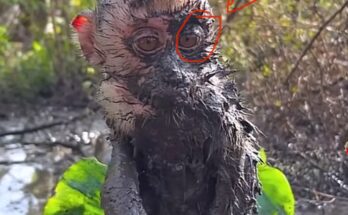The world’s wildlife is facing numerous challenges, from habitat destruction to the effects of climate change. Sadly, some young animals find themselves in dangerous situations, often due to human negligence or environmental factors. One heart-wrenching scenario is when a baby monkey ends up trapped in a pile of trash, struggling for survival. These vulnerable creatures rely on humans, both for immediate rescue and long-term support, to ensure they get back on the path to health and safety. Here’s a detailed guide on how to help a baby monkey stuck in a trash pile.
1. Assess the Situation
The first step when encountering a baby monkey in distress is to assess the situation carefully. Ensure your own safety, as wild animals, especially when frightened or in pain, may act unpredictably. Before approaching the baby monkey, observe its behavior from a distance. Check for any visible injuries, signs of illness, or distress. If the monkey seems calm and uninjured, it might be best to allow it to find its own way out, especially if the mother is nearby. However, if the baby monkey is trapped or appears weak, immediate intervention may be necessary.
2. Contact Wildlife Rescue Organizations
Before taking any action, it is essential to contact professionals, such as wildlife rescue groups, animal shelters, or local authorities who specialize in rescuing wildlife. They will have the experience and tools needed to safely handle the monkey. In many cases, attempting a rescue without proper training can be harmful to both the animal and the rescuer.
When contacting these organizations, provide clear and specific information about the location, the condition of the baby monkey, and any details that can help them assess the situation quickly.
3. Create a Safe Environment for the Baby Monkey
If you are advised by professionals to assist in the rescue or are waiting for help to arrive, create a safe environment for the baby monkey. Do not try to remove it from the trash pile immediately, as sudden movements or loud noises may cause panic, potentially leading to injury or even death. Instead, keep a safe distance and try to secure the area by gently removing any potential dangers, such as sharp objects or hazardous waste.
If possible, provide some form of shelter or a quiet space where the monkey can feel protected. For example, you could use a cardboard box or a towel to cover the animal and shield it from the sun or harsh weather.
4. Minimize Stress and Ensure Comfort
A baby monkey may be frightened and stressed, so it is essential to minimize disturbances while waiting for the professionals to arrive. Avoid loud talking, sudden movements, or any interaction that may further agitate the animal. Keep the environment calm and as quiet as possible. If the monkey is not already showing signs of distress, refrain from physical contact or attempts to feed it.
Monkeys, especially babies, rely on their caregivers for warmth, comfort, and food. If the baby is visibly cold or shivering, consider providing warmth through a blanket or towel, but be sure not to overheat it. If you’re unsure whether the monkey is in immediate danger, wait for professional advice before taking any further steps.
5. Follow Up on the Monkey’s Care
After the rescue, it is crucial to ensure that the baby monkey receives proper care. Wildlife professionals will assess the health of the animal and decide on the best course of action, which may include medical treatment, rehabilitation, and reintroduction to the wild if possible. Keep in touch with the rescue team to stay informed about the monkey’s recovery process and how you can help further.
Conclusion
Helping a baby monkey trapped in a trash pile requires quick thinking, patience, and care. While the rescue process should always involve wildlife professionals, individuals can play a crucial role in ensuring the monkey receives the help it needs. By staying calm, providing a safe environment, and seeking the right professional assistance, you can make a significant difference in the life of a baby monkey. With collective effort and awareness, we can help protect vulnerable wildlife and create a safer world for all creatures, big and small.
https://www.youtube.com/watch?v=tbGHnNq5zDM&t=45s



